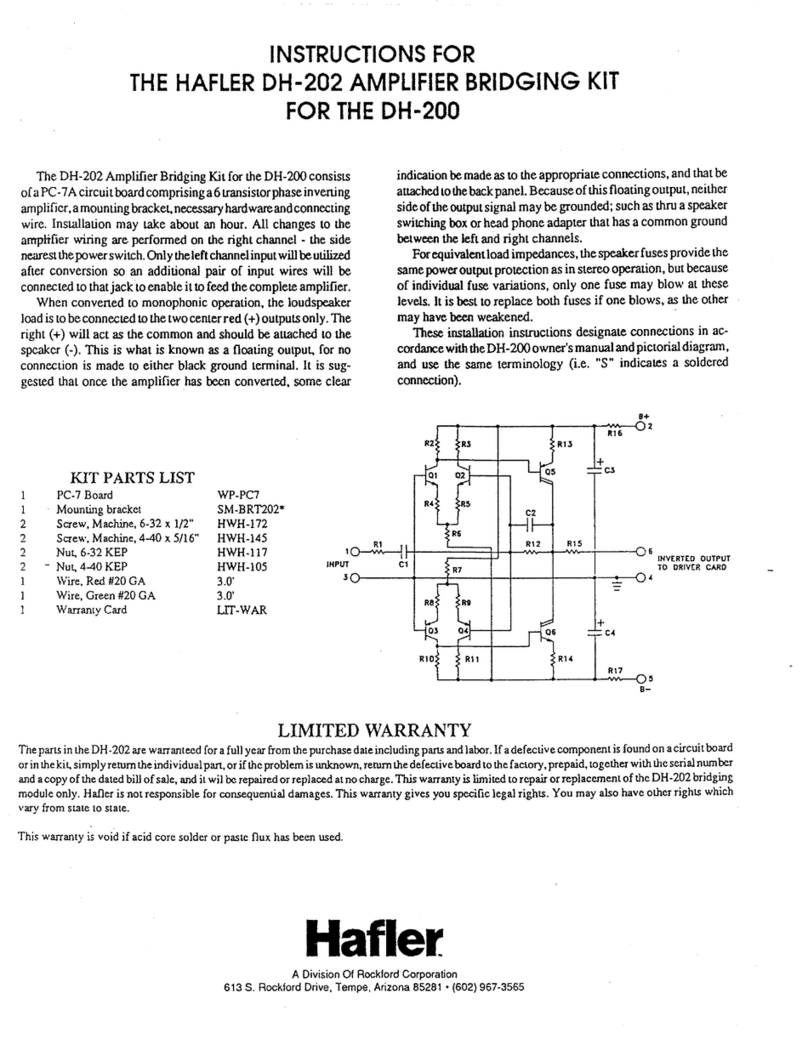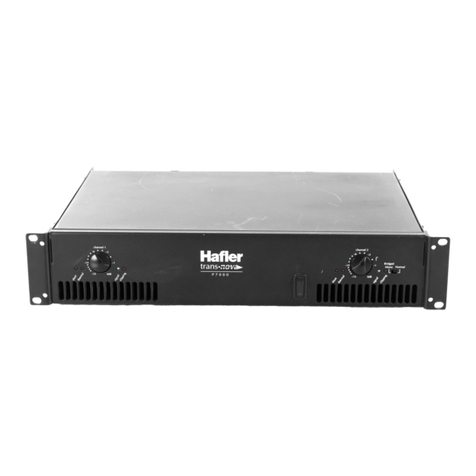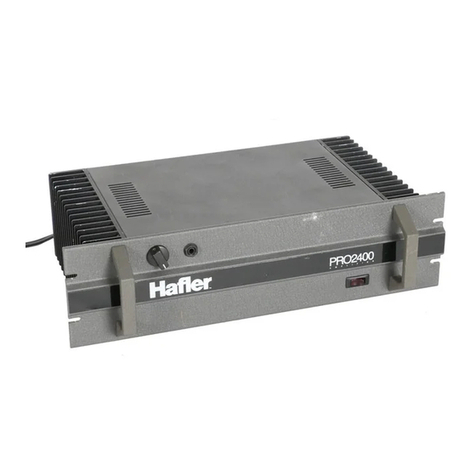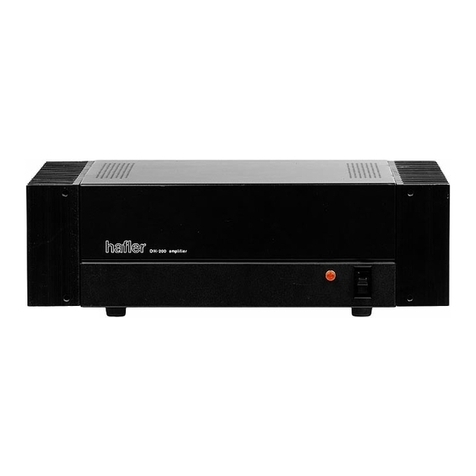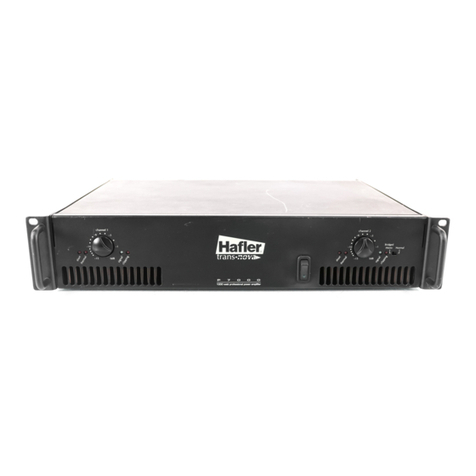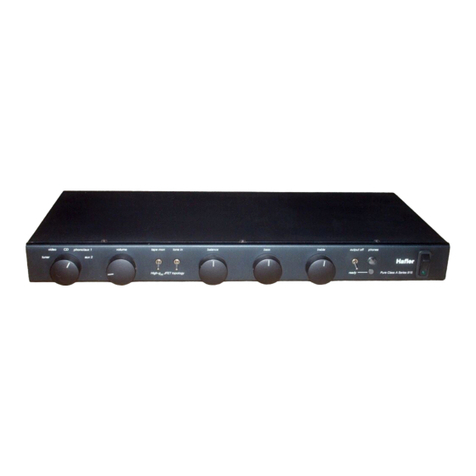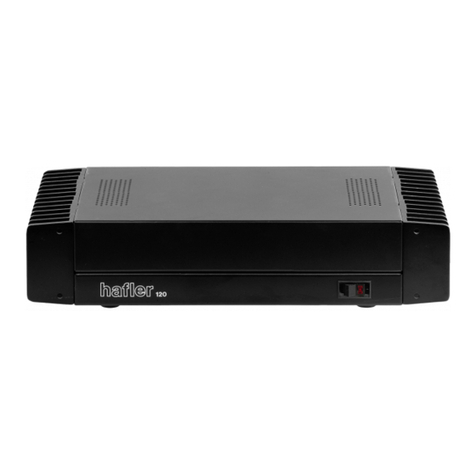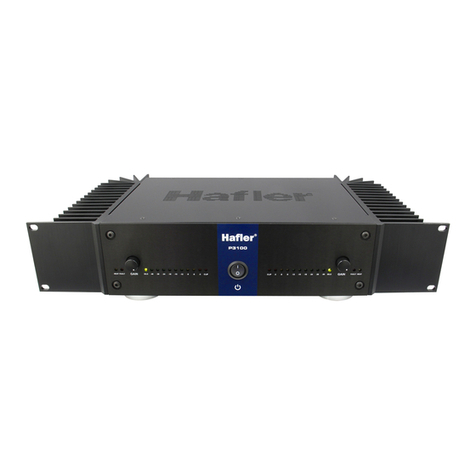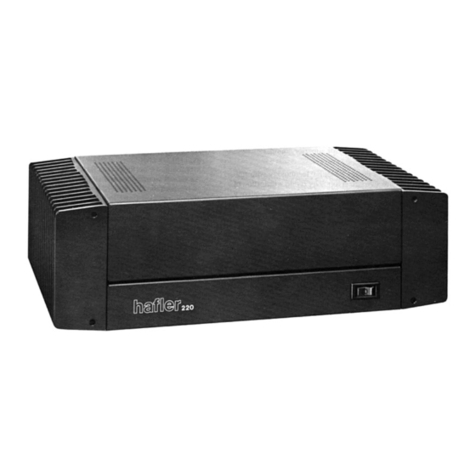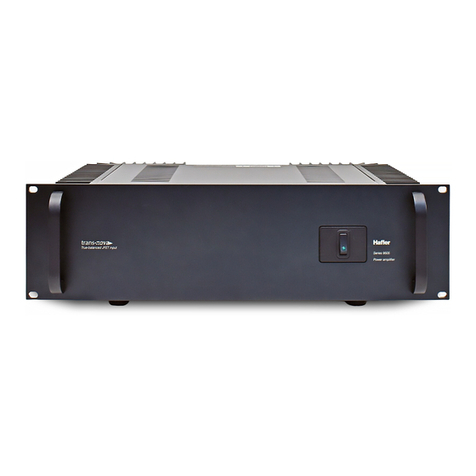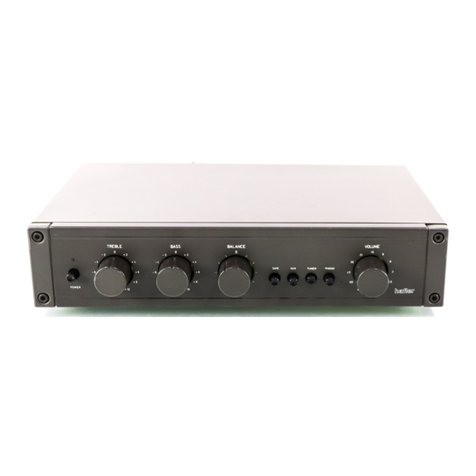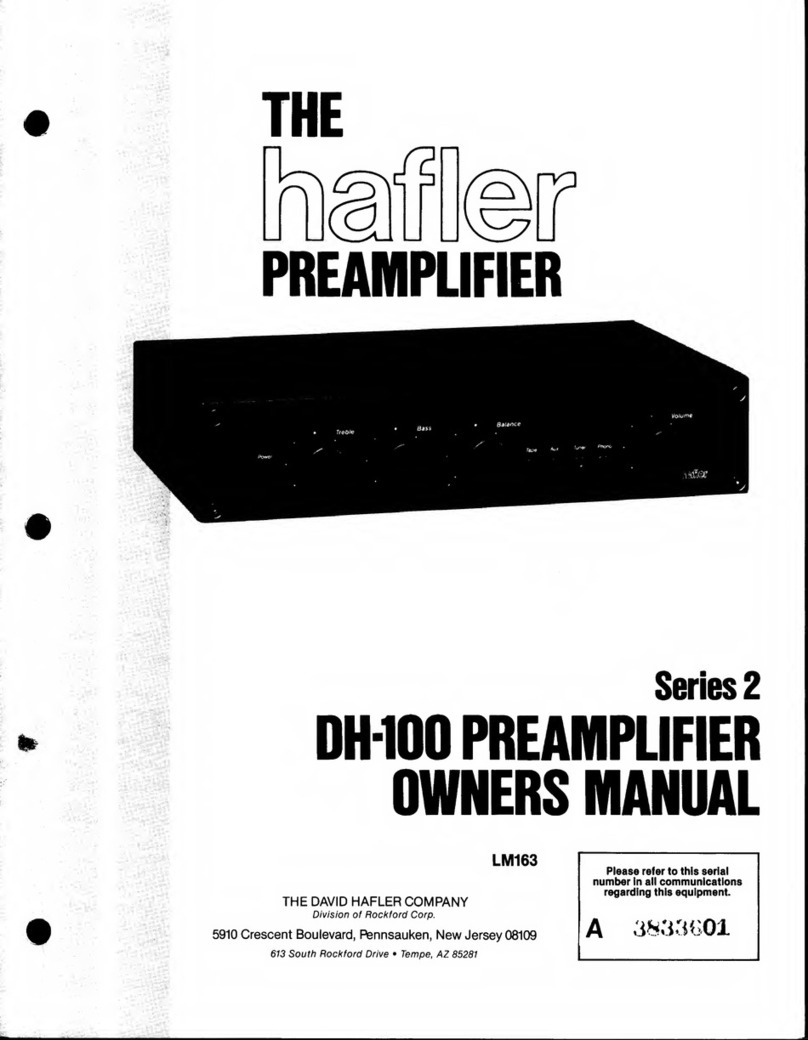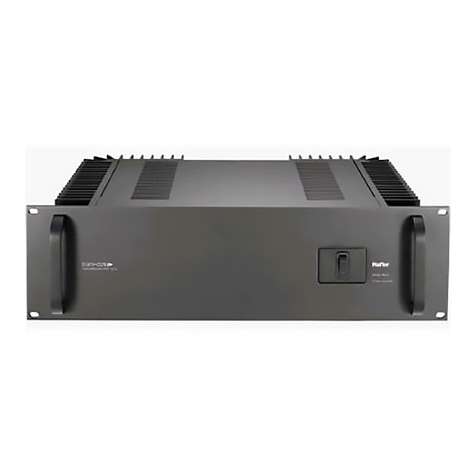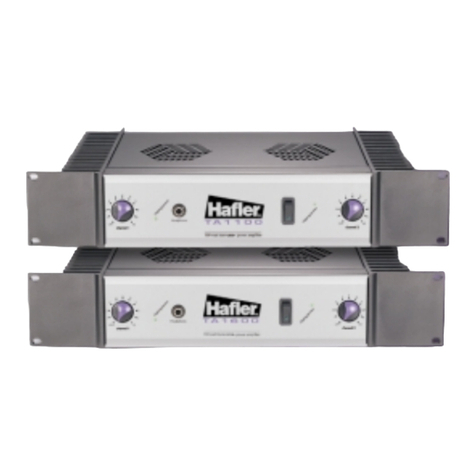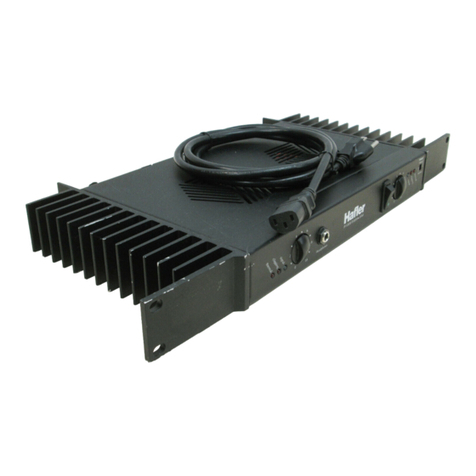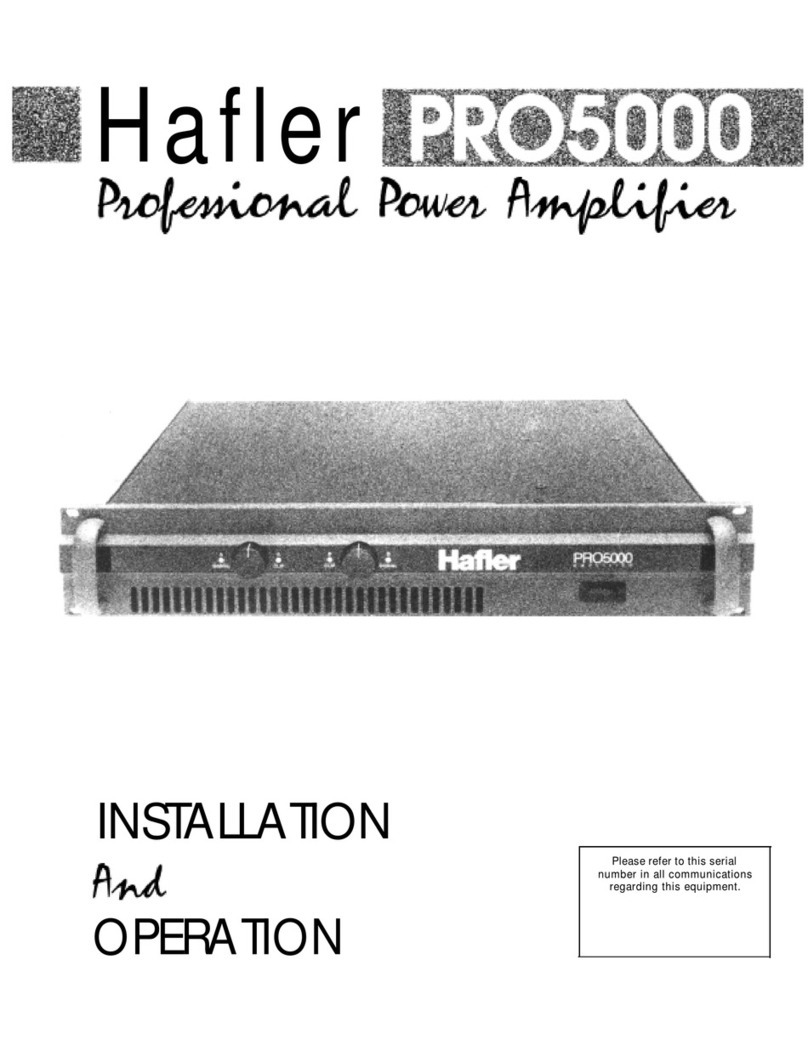Toroidal
Transformer
Energy Storage
Great Flexibility
Display
Fan Cooling
The fan cooling system is a key to the
JF2000’s
perfor-
mance. The fan is of a very quiet design, with continuous
variable speed control. When the amp is cool, the fan is
off
As the amp is driven harder, the fan gradually turns on and
speeds up only to the extent needed to sustain the power
dissipation needed for the conditions.
The power supply for the JF2000 is based on a 1000 Volt-
Ampere toroidal (donut-shaped) line transformer. We use
the toroid core (which is more expensive than a conventional
square transformer) for its higher efficiency, lower weight,
smaller size, and freedom from stray magnetic fields. The
1000 Volt-Ampere rating indicates that the transformer can
supply power to a load of 1000 Watts continuously.
Energy storage for the power supply consists of two 42,000
Microfarad capacitors. This large energy storage capability
provides a low-impedance source of extremely high current
for surges, musical transients, variations in speaker imped-
ance, and very low frequencies.
Individual channel gain controls match the JF2000 to a wide
range of installations.
Four Output Modes are available to fit almost any require-
ment: Normal Stereo, Stereo plus Bridged Mono, Bridged
Mono, and Dual Mono.
Simple three-LED multicolor display shows amplifier status
including power, signal level, distortion, and thermal condi-
tion.
INSTALLATION AND SETUP
Amplifier
Placement
The JF2000 is designed to be placed on a shelf or other
substantial support. (A rack-mount front panel is available.)
Take care to ensure unimpeded airflow behind the amplifier,
as the intake and exhaust vents are located at the rear. If the
amp is to be placed in an enclosed wall unit or cabinet, it
would be a good idea to allow for fresh air intake and hot air
exhaust venting in the back of the cabinet, especially for
continuous high-output operation.
2


